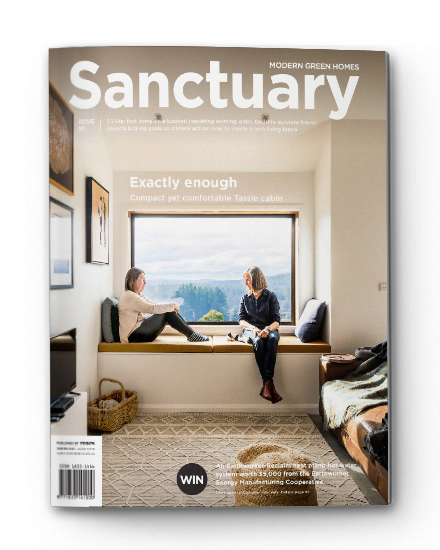Conversation between eras
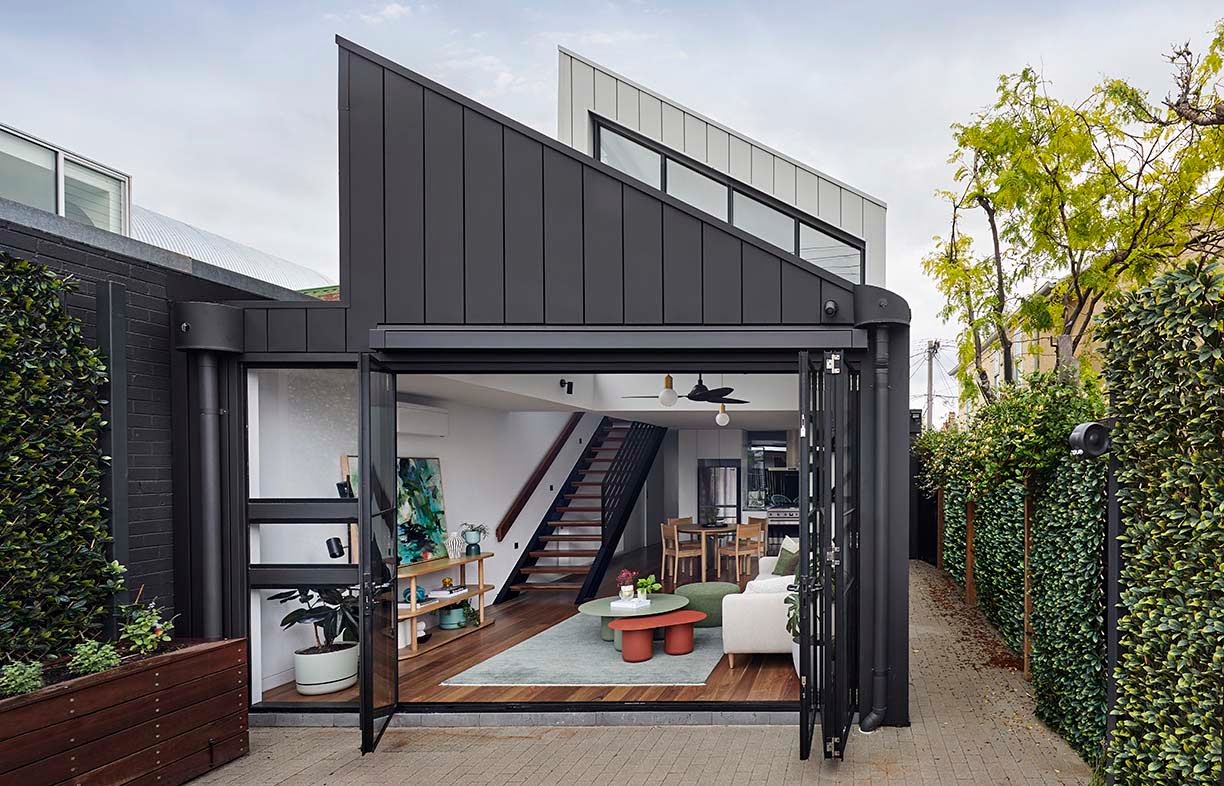
The renovation of this heritage-listed Melbourne cottage perfectly blends the way things were done then and the way we can choose to live now, celebrating history while embracing modern, energy-efficient design and connection to community.
At a glance:
- Small-footprint, all-electric house
- Faithfully reconstructed and thermally upgraded heritage facade and front rooms
- Passive solar designed, light-filled extension that opens to the rear streetscape
For many years this 1900s heritage cottage was simply the home of Fitzroy North couple Kate and Rick’s kind, elderly neighbour. When she went into care and the cottage came up for sale, they decided to buy it. As their house is to the south, they wanted to avoid a new build blocking out their light and sun. They were also considering future family options such as downsizing themselves or using it as a home for their adult daughter, or simply renting it out.
The couple chose Northcote-based architect Ben Callery for the much-needed renovation of the house. “I saw an article about Ben’s work in the paper and I was really impressed that he’d done a lot of inner-city work and had a really strong focus on light,” says Kate. They were also keen to make it as eco-friendly as possible, and Ben’s practice specialises in environmentally conscious design.
The front section had to meet City of Yarra heritage regulations, which dictated maintaining the existing form of the two front rooms and facade. For the rear section, however, Ben had the freedom to create a modern design with an emphasis on light and sustainability.
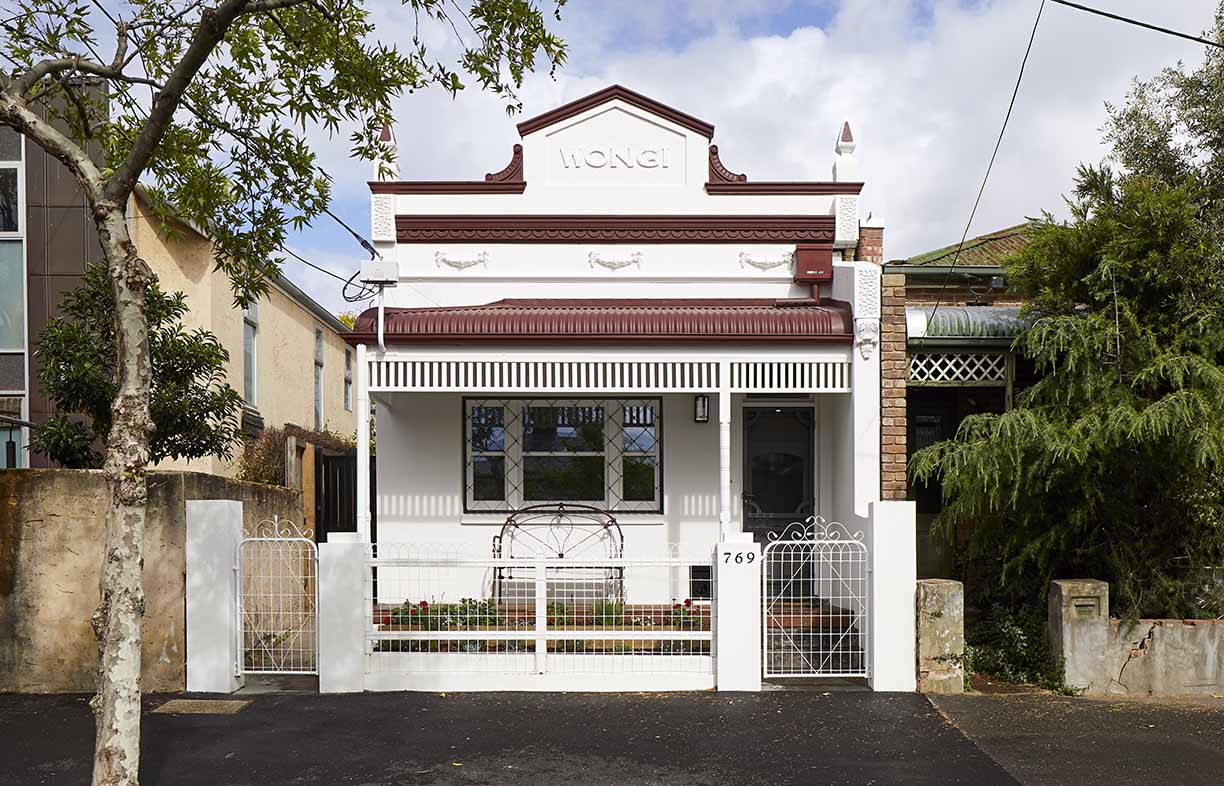
In the end, the front rooms and facade had to be reconstructed from scratch, because after obtaining the permits and starting to build, the team quickly discovered that the heritage part of the house was completely unsalvageable. “And then we had to go through the whole planning process again to be able to pull it down and rebuild it,” says Kate. The rebuild required specialist tradespeople to recreate the heritage features, and resulted in lengthy delays and an increase of ten to fifteen per cent in costs. Fortunately, all parties remained committed to the project, and some positives emerged from the process. “In rebuilding the front two rooms we could put in much higher levels of thermal insulation, double glazing, and thermal mass. We couldn’t change the orientation of those rooms, or window sizes, but we could at least make the building envelope much more thermally sound as well as structurally stable,” says Ben.
Kate and Rick also realised that they were in fact preserving features from the whole history of the house, not just the original build. This included elements added by the Greek family of their former neighbour, and possibly other owners as well. For example, in addition to the original stone steps and lintel, the heritage specialists painstakingly removed, restored and reinstated a pair of unique pyramid features sitting at either end of the decorative parapet, which were most likely added by the Greek family.
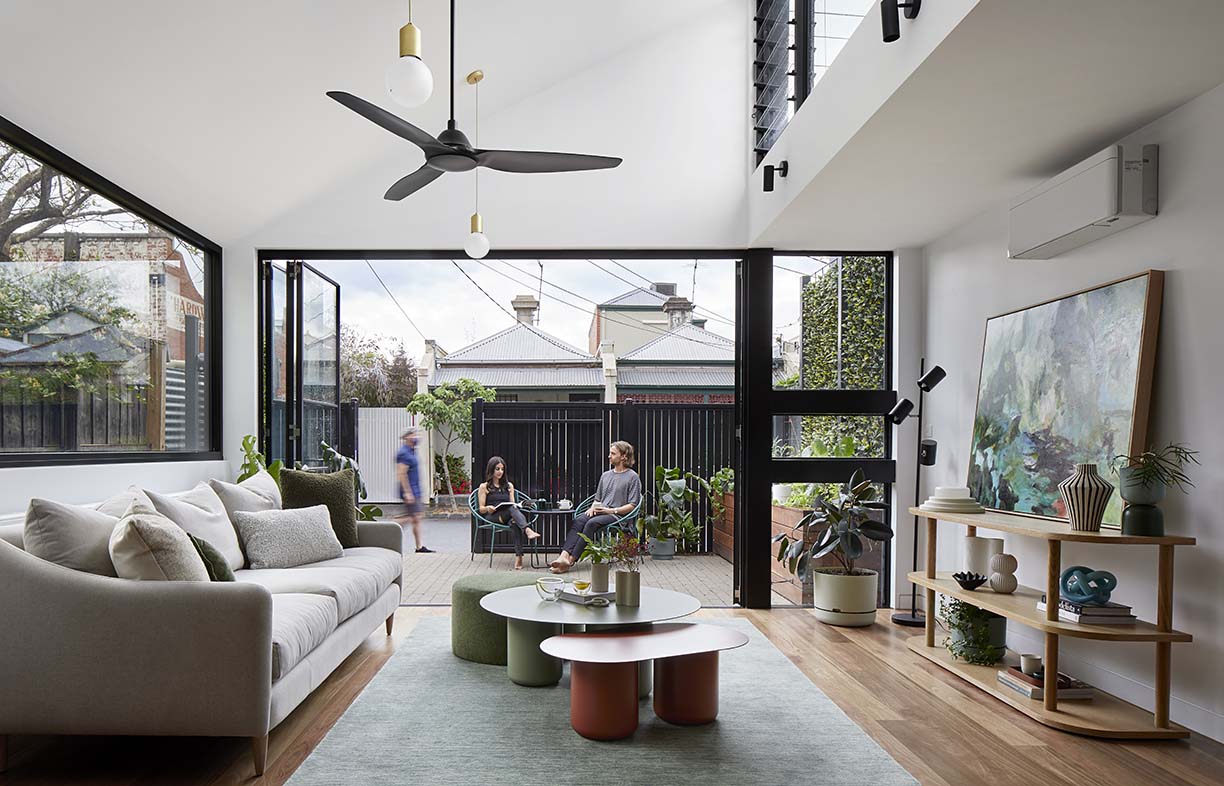
This lengthy process led Rick and Kate to reflect on how they could add to this history, by stamping something of their own story onto the building. Kate’s maternal grandmother was an Indigenous Australian from the Western Australian Wangkatha tribe, also known as the Wongi. “She was living on country, speaking language, and was hunted down and removed in the early 1900s – at the same time as this house was being built, here on the other side of Australia,” says Kate. “I thought how ironic on the one hand, but also significant to have the house named with the name of my grandmother’s tribe, given that this house was being constructed as their groups were suffering the deconstruction of attempted genocide.” The name Wongi is now proudly stuccoed on the parapet – a contrast to the other largely Anglo-Saxon terrace house names in their street.
Inside, Wongi has indeed been transformed into something special. The front section, with two bedrooms, is simply a more comfortable version of the original, but the rear section brings something completely new. According to Ben it is “designed around lifting up to the sun”.
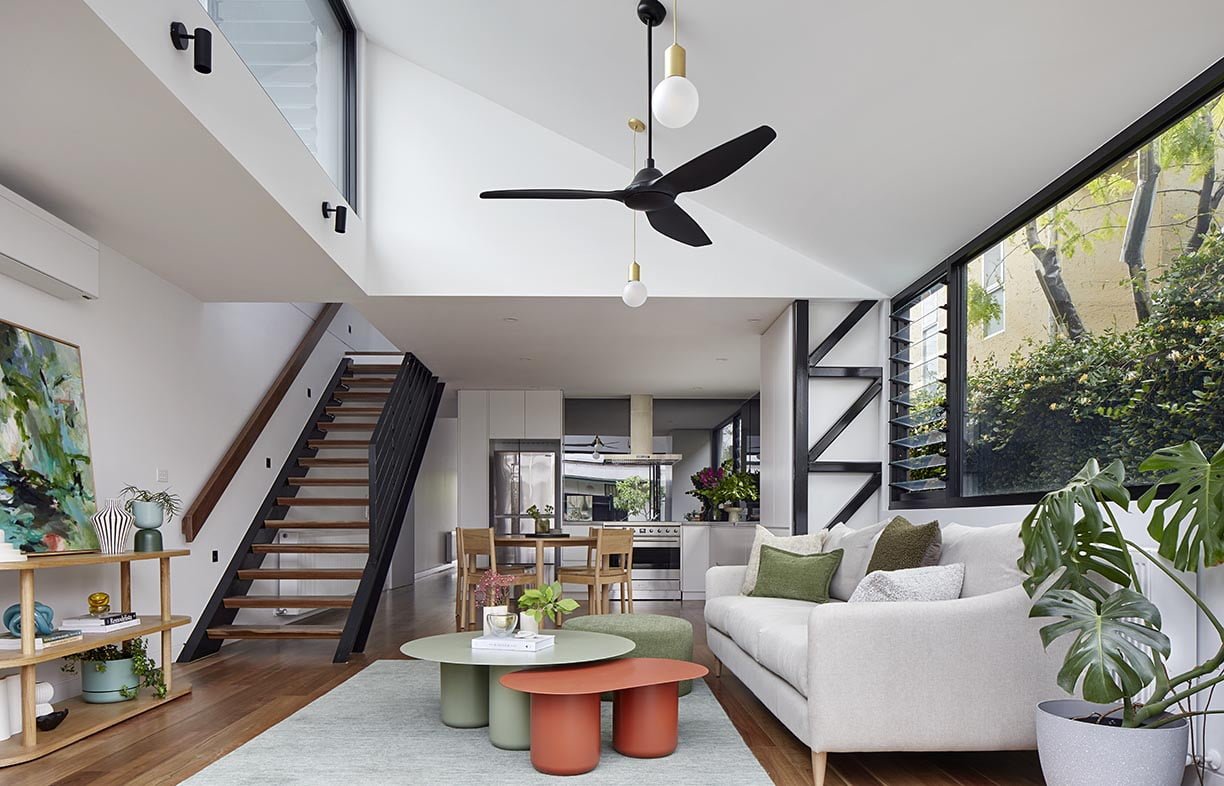
The rear section roofline rakes dramatically up to the north, bringing sunlight into the upstairs bedroom and downstairs living area, while remaining low on the southern side to avoid overshadowing Kate and Rick’s residence. There is lots of glass facing north and west, all with operable shading. Large windows built into the angled roof have external venetian blinds, and bifold doors with a folding awning open to the rear courtyard. The awning extends the living space, which is important in a house with a small footprint.
As well as passive solar design, the house features double-glazed windows, high levels of insulation, and thermal mass in the double brick walls and concrete slab. It is all-electric, with a small solar PV system, a heat pump for hot water and hydronic heating, and an induction cooktop.
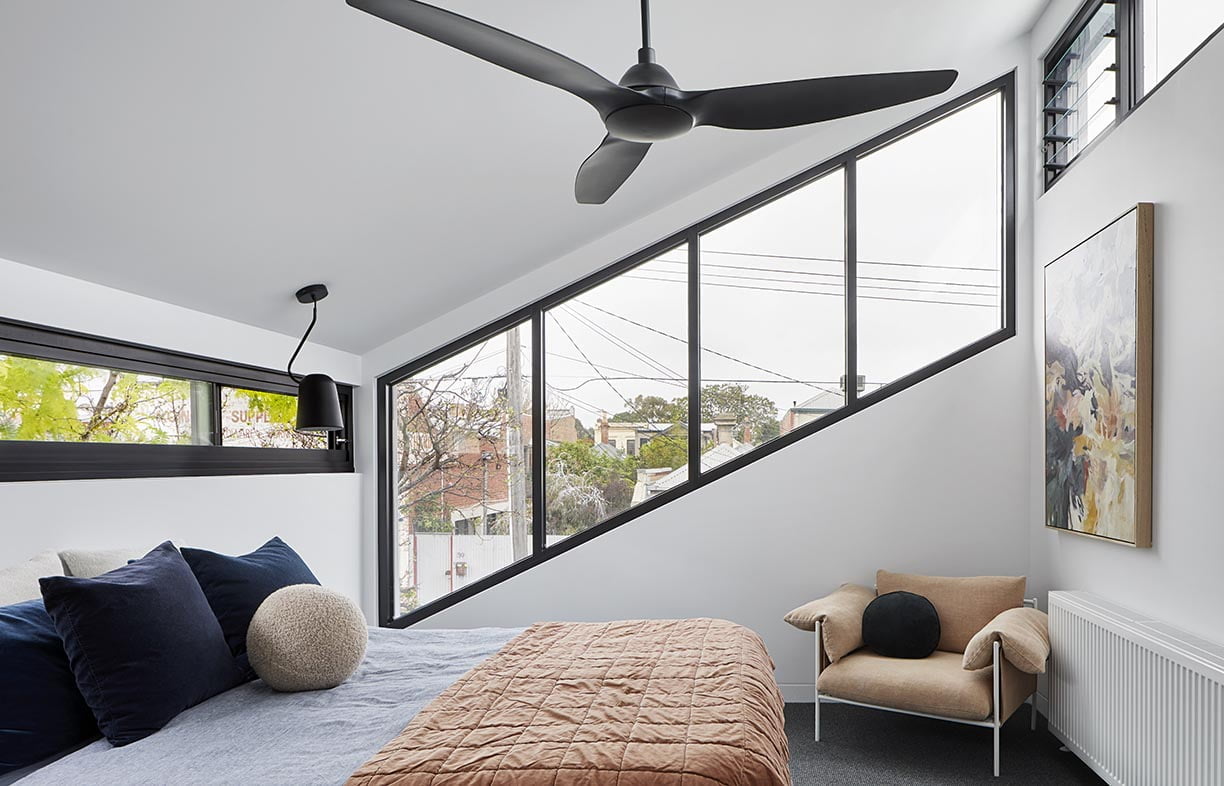
One of the cottage’s unique features is that it has two street frontages. The couple find that the rear street is much quieter, with very community-minded neighbours. Ben’s design includes a big sliding gate at the back of the property, which allows the living room and courtyard to open up and connect with the street.
Maddie Johnson has been renting the house with three flatmates since the renovation was completed late last year. She says that they don’t feel crowded in the cleverly designed three-bedroom home, though at 120 square metres it’s not large. “We love living here, we’re so lucky. It’s so light-filled and always bright and airy,” she says. They rarely use the heating or air conditioner and have been amazed by the thermal efficiency of the house. Their first quarterly electricity bill was $200, with four people living and working from home.
For Kate and Rick, the Wongi project was a chance to connect an important part of their family history to the street and community they have lived in for so many years. “I have this real sense that as a society we’re very poor at integrating our history, and this was an opportunity to do that in a really concrete way,” says Kate.
Ben loves the outcome. “It does create a really nice, interesting juxtaposition between the old and the new. We’re really proud of that result,” he says.
Further reading
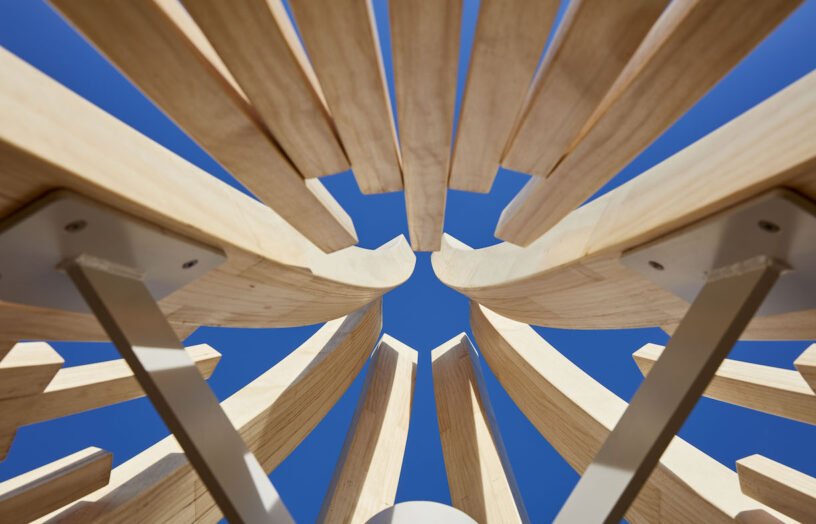 Ideas & Advice
Ideas & Advice
In praise of Accoya
Native hardwoods are beautiful, strong and durable, but we need to wean ourselves off destructive forestry practices. Building designer and recreational woodworker Dick Clarke takes one hardwood alternative for a test run.
Read more House profiles
House profiles
Airy flair
A minimalist renovation to their 1970s Queenslander unlocked natural ventilation, energy efficiency and more useable space for this Cairns family.
Read more House profiles
House profiles
Pretty in pink
This subtropical home challenges the status quo – and not just with its colour scheme.
Read more

